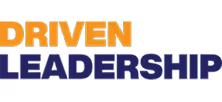Leadership Development Training in Tacoma, WA


Leadership Training Leadership Development Training in Tacoma, WA
Strong leadership is the difference between teams that merely survive and teams that consistently deliver. In Tacoma, WA, leadership development training that emphasizes long-term growth—covering self-mastery, decision-making, communication, and resilience—helps organizations navigate regional pressures from the Port of Tacoma, healthcare systems, higher education, and small-to-mid sized businesses. This page explains what effective leadership development looks like in Tacoma, the common problems it solves, how programs are delivered, how progress is measured, and the evidence of lasting impact.
Why Tacoma organizations need intentional leadership development
Tacoma’s economy is diverse—logistics and shipping, healthcare, education, manufacturing, and a growing tech and startup scene. Local realities create leadership demands that are unique to the area:
- Seasonal weather and shorter daylight hours that affect team morale and energy.
- Commuter and cross-regional talent flows with Seattle and Joint Base Lewis-McChord nearby.
- Rapid operational pressures in logistics and healthcare that require timely, confident decision-making.
- Teams with mixed tenures—from veteran unionized workers to new graduates from University of Washington Tacoma—requiring adaptive communication and inclusion skills.
Leadership development in Tacoma must therefore build durable habits: leaders who manage self first, communicate clearly across generations and cultures, make data-informed decisions under pressure, and sustain team resilience through operational stress.
Core topics we center on
Programs targeting long-term leader growth focus on skills that transfer to daily work. Key modules include:
- Self-mastery: emotional regulation, bias awareness, time and energy management, and increasing self-awareness so leaders respond rather than react.
- Decision-making: frameworks for speed and quality, balancing risk and stakeholder impact, and structured after-action reviews.
- Communication: giving and receiving feedback, framing messages for different audiences, and facilitating difficult conversations.
- Resilience: stress inoculation, recovery routines, fostering psychological safety, and building team-level resilience systems.
- Execution and accountability: translating strategy into measurable actions, improving follow-through, and coaching for performance.
Each topic is taught with a focus on practical application—skills leaders can use in the next meeting or shift.
Program delivery options in Tacoma
We design delivery to match organizational needs and local logistics. Typical formats include:
- Cohort-based programs: Small peer cohorts (8–16 participants) meet in-person or hybrid over 8–12 weeks to work through a structured curriculum and real-company projects.
- Executive coaching: One-on-one coaching for senior leaders, with sessions scheduled around operational calendars and integrated with board or executive priorities.
- Blended online modules: Self-paced theory and microlearning combined with live virtual labs to accommodate shift work and geographically distributed teams.
- On-site team sprints: Focused, facilitated sessions at your Tacoma site for leadership teams needing rapid alignment on a strategic initiative.
- Retreats and experiential intensives: Short immersive experiences that accelerate self-mastery and team norms in a concentrated format.
Delivery blends experiential learning—simulations, role-plays, real work assignments—with reflective practice and accountability touchpoints.
Assessment, progress tracking, and measurement
Long-term development requires clear baselines and measurable progress. A typical measurement approach includes:
- Intake and alignment: Leadership goals aligned with business metrics and key stakeholder expectations.
- 360 and behavioral assessments: Multi-rater feedback to surface blind spots and strengths; personality and competency inventories to guide development plans.
- Individual development plans (IDPs): Specific behaviors, milestones, and timelines linked to performance metrics.
- Progress tracking dashboards: Regular snapshot of engagement scores, leadership behavior changes, decision-cycle times, retention, and execution metrics.
- Periodic re-assessment: Repeat 360s and KPI reviews at 3, 6, and 12 months to quantify change and recalibrate development activities.
Assessment data is connected to operational outcomes so leaders and HR can see how behavioral change correlates with real business results.
Common leadership problems solved for Tacoma organizations
- Leaders who avoid tough conversations, causing unresolved conflict and lost productivity.
- Slow decision-making in time-sensitive operations at ports, logistics, or hospital environments.
- Low retention in frontline roles due to lack of meaningful development and poor supervisor support.
- Siloed communication between departments or unions and management, obstructing execution.
- Executive teams lacking shared language and processes for strategy and accountability.
Programs focus on these pain points with role-based practice and measurable behavior change.
Evidence of participant impact
Meaningful leadership development is measurable and sustained. Organizations implementing comprehensive programs in Tacoma typically observe:
- Improved team engagement and leader effectiveness scores on follow-up assessments.
- Faster, clearer decisions in operations and reduced escalation frequency.
- Better retention of high performers and more predictable internal promotions.
- Stronger cross-functional collaboration and fewer project delays.Evidence is gathered through pre/post assessments, business KPIs, and documented case examples of leaders applying new approaches to critical, real-world problems.
Making change stick: long-term growth and sustainability
Sustainable leadership development is not a single event. Key elements that lock in gains include:
- Ongoing coaching and peer cohorts that meet quarterly to maintain momentum.
- Leader action plans tied to real work with manager accountability reviews.
- Train-the-trainer or internal facilitator development so organizations can scale learning.
- Refresh modules for emerging topics (remote/hybrid leadership, diversity and inclusion, crisis leadership).
When development is integrated into performance systems and daily work, skills compound and culture shifts.
Final perspective
Leadership Training Leadership Development Training in Tacoma, WA is most effective when it addresses local operational realities, focuses on measurable behavior change, and uses blended delivery to fit the rhythm of Tacoma workplaces. By centering self-mastery, decision-making, communication, and resilience, and by pairing assessments with meaningful follow-through, organizations create leaders who not only perform in the moment but grow capabilities that benefit teams and the bottom line over the long term.

